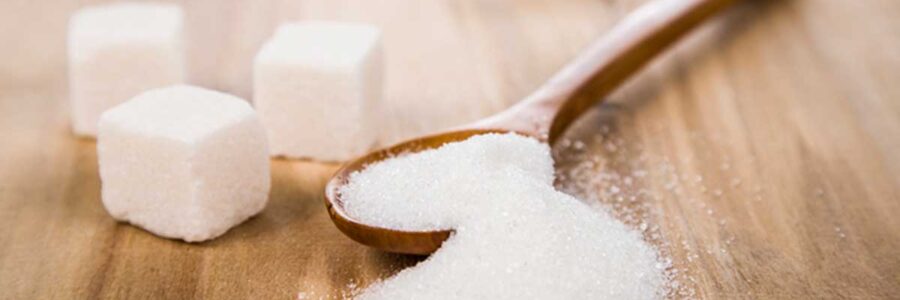Hello, doting parents! It’s time we shed some light on an ingredient that’s probably lurking in your pantry—Sucralose Under the Lens; sucralose. This artificial sweetener, often found in ‘diet-friendly’ snacks and beverages, is being scrutinized. Research indicates there’s more to Sucralose Under the Lens; sucralose and its derivative, sucralose-6-acetate than meets the eye.
Unraveling the Facts about Sucralose
It’s no secret that many of us have a sweet tooth. This has led to the widespread use of sucralose as an alternative to sugar. You can find it in various products, from diet sodas to sugar-free treats. However, recent research, including a study conducted by Susan Schiffman, an adjunct professor at North Carolina State University, suggests that sucralose might have a dark side.[1]
Schiffman’s study highlights sucralose-6-acetate, formed in our digestive system when we consume sucralose. They found evidence that this derivative could be genotoxic, indicating that it could potentially harm our DNA. Moreover, the study revealed that small quantities of sucralose-6-acetate are present in sucralose itself, even before it’s ingested.[1]
This is concerning because the European Food Safety Authority has established a limit for the acceptable intake of genotoxic substances. Astonishingly, the quantity of sucralose-6-acetate in just one beverage sweetened with sucralose daily surpasses this limit.[2]
Diving into the Details
Schiffman and her colleagues went to great lengths in their research. They subjected human blood cells to sucralose-6-acetate and found signs of genotoxicity, indicating that this substance can disrupt cell DNA.[1]
Additionally, the team investigated the impact of sucralose-6-acetate on gut health. The outcome was worrisome. Exposure of gut epithelial tissues to both sucralose and sucralose-6-acetate appeared to result in a ‘leaky gut’.[3] This condition can allow substances that should be expelled through feces to enter the bloodstream, possibly leading to various health issues.
What this Means for Us
The takeaway here is that we should reassess our reliance on sucralose. With mounting evidence suggesting potential risks, it might be wise to limit its consumption. Moreover, this should serve as an alert to scrutinize other artificial sweeteners.
Exploring Healthier Alternatives
Now, let’s address the sweet cravings. There are natural alternatives to artificial sweeteners that can be considered.
For instance, honey and maple syrup are naturally packed with nutrients and antioxidants[4]. Naturally sweet due to fructose, fruits are an excellent source of fiber and essential compounds.[5] Adding spices like cinnamon and nutmeg can also enhance the sweetness of your dishes without the health risks.
Regulating Blood Sugar Levels Naturally
It is vital to manage blood sugar levels for overall well-being. Consuming balanced meals that contain protein, fat, and fiber can help regulate the release of sugar into the bloodstream.[6, 7]
It’s also advisable not to consume sugary foods in isolation. Pair them with sources of protein or fat, such as nuts or eggs. Regular physical activities can also help stabilize blood sugar levels.[8]
To Summarize…
Recent studies reveal that sucralose and its derivative, sucralose-6-acetate, might harm DNA and gut health.[1] It is crucial to be cautious about the consumption of artificial sweeteners and to consider healthier, natural alternatives. Managing blood sugar levels through a well-balanced diet and regular physical activity is also imperative for optimal health. Let’s make well-informed choices for ourselves and our loved ones.
As parents, we share the responsibility and the journey. Stay educated, remain vigilant, and here’s to a healthier future for us and our children!
References:
- Schiffman, S. S., et al. (2023). Toxicological and pharmacokinetic properties of sucralose-6-acetate and its parent sucralose: in vitro screening assays. Journal of Toxicology and Environmental Health Part B. doi.org/10.1080/10937404.2023.2213903.
- “Threshold of Toxicological Concern.” European Food Safety Authority.www.efsa.europa.eu/en/topics/topic/threshold-toxicological-concern.
- Marcelo Campos, MD. (2021). “Leaky Gut: What Is It, and What Does It Mean for You?” Harvard Health.www.health.harvard.edu/blog/leaky-gut-what-is-it-and-what-does-it-mean-for-you-2017092212451.
- “Honey.” Mayo Clinic, Mayo Foundation for Medical Education and Research, (2020).www.mayoclinic.org/drugs-supplements-honey/art-20363819.
- Malin, Alecia S et al. (2003). “Intake of fruits, vegetables and selected micronutrients in relation to the risk of breast cancer.” International journal of cancer vol. 105,3: 413-8. doi:10.1002/ijc.11088.
- “Insulin Resistance and Diabetes.” Centers for Disease Control and Prevention, (2022).www.cdc.gov/diabetes/basics/insulin-resistance.html.
- Paterson, Megan et al. (2015). “The Role of Dietary Protein and Fat in Glycaemic Control in Type 1 Diabetes: Implications for Intensive Diabetes Management.” Current diabetes reports vol. 15,9: 61. doi:10.1007/s11892-015-0630-5.
- Buffey, A.J., Herring, M.P., Langley, C.K. et al. (2022). The Acute Effects of Interrupting Prolonged Sitting Time in Adults with Standing and Light-Intensity Walking on Biomarkers of Cardiometabolic Health in Adults: A Systematic Review and Meta-analysis. Sports Med 52, 1765–1787.https://doi.org/10.1007/s40279-022-01649-4.


